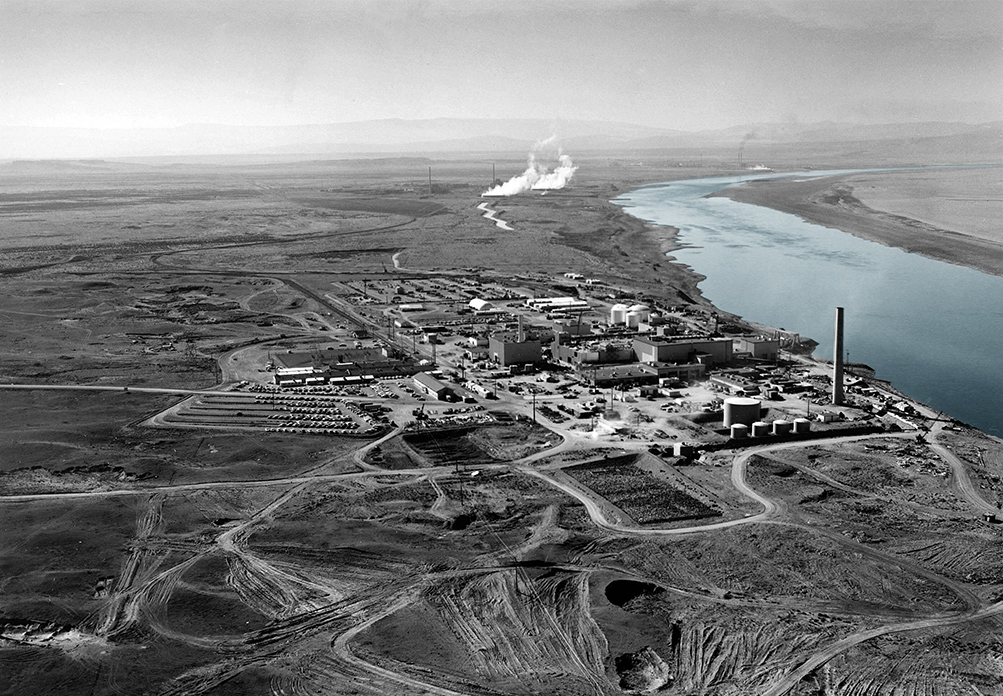Thirty Years and Counting: The Hanford Cleanup and What It Means for Oregon
Today marks 30 years since the federal government and the state of Washington signed what’s known as the Tri-Party Agreement, which mapped out a plan to ensure proper cleanup of one of the largest environmental challenges in the world: the Hanford Nuclear Site. While the significant progress resulting from the TPA is worth celebrating, there’s still a lot of work to do.
The history:
In 1944, the federal War Department began using the Hanford Nuclear Site to produce plutonium for America’s nuclear weapons program. The 586-square-mile plot of land lies along the Columbia River in southeast Washington, just 35 miles north of the Oregon border. The site produced the plutonium used in the atomic bomb dropped on Nagasaki, Japan, during World War II. Over the next four decades the Hanford facility produced about two-thirds of the plutonium for America’s nuclear deterrence.
Hanford's various plutonium production processes created millions of gallons of highly radioactive and chemically hazardous waste. Without the technology or facilities to treat such complex waste mixtures, the most hazardous of the liquid waste was pumped into 177 underground storage tanks. An estimated 444 billion gallons of other contaminated liquids were dumped into the soil, causing extensive contamination to the groundwater.
Plutonium production at Hanford ended in the late 1980s, at which point the focus turned to cleanup. On May 15, 1989, after several years of negotiations, the Washington State Department of Ecology, the U.S. Environmental Protection Agency, and the U.S. Department of Energy signed the Hanford Federal Facility Agreement and Consent Order, also known as the Tri-Party Agreement. As a contractually binding and living document, the TPA is regularly updated and contains enforceable milestones and targets for cleanup at Hanford.
Making progress:
Thirty years in, cleanup at Hanford has not become any less complex or challenging, but progress has been made. The Tri-Party Agreement has helped drive regulators to take meaningful action, put pressure on Congress to continue funding cleanup efforts, and significantly improve cleanup processes. Various state and federal agencies, tribal leaders, and public interest groups have also worked hard to ensure the cleanup sufficiently protects our environment and public health.
The Oregon Department of Energy has played an active role in the cleanup for more than 30 years – ensuring cleanup priorities are especially protective of the Columbia River. While Oregon has no regulatory authority at Hanford, ODOE experts provide technical reviews and policy analysis, and the federal government recognizes ODOE as a critical, objective voice related to the cleanup. ODOE also staffs the Oregon Hanford Cleanup Board, which provides input to the USDOE and its regulators on the cleanup. ODOE and the Board are committed to keeping important cleanup issues visible, holding the USDOE and its contractors accountable, ensuring good public involvement and outreach, and advocating for the protection of the people and the environment at risk.
Hanford’s future:
USDOE has made significant progress on several cleanup priorities, but the extent of the contamination is so widespread, and some challenges so complex, that they expect cleanup to continue for another 50 years or more. Oregon still has a huge stake in the future of Hanford’s cleanup. From Hanford, the Columbia River flows through prime Oregon farmlands and fisheries. Radioactive and chemical contamination pose a potential long-term threat to these important resources. While many of the risky issues have been addressed, the remaining cleanup efforts will be no less important, difficult, or costly. Thanks to the Tri-Party Agreement and Oregon’s watchful eye, protective cleanup will continue to be the priority for decades to come.
Want to dive deeper into Hanford’s history? Check out our podcast episodes about Hanford.
Learn more about Oregon’s involvement.
Get involved! Join us for the next public Oregon Hanford Cleanup Board meeting.


